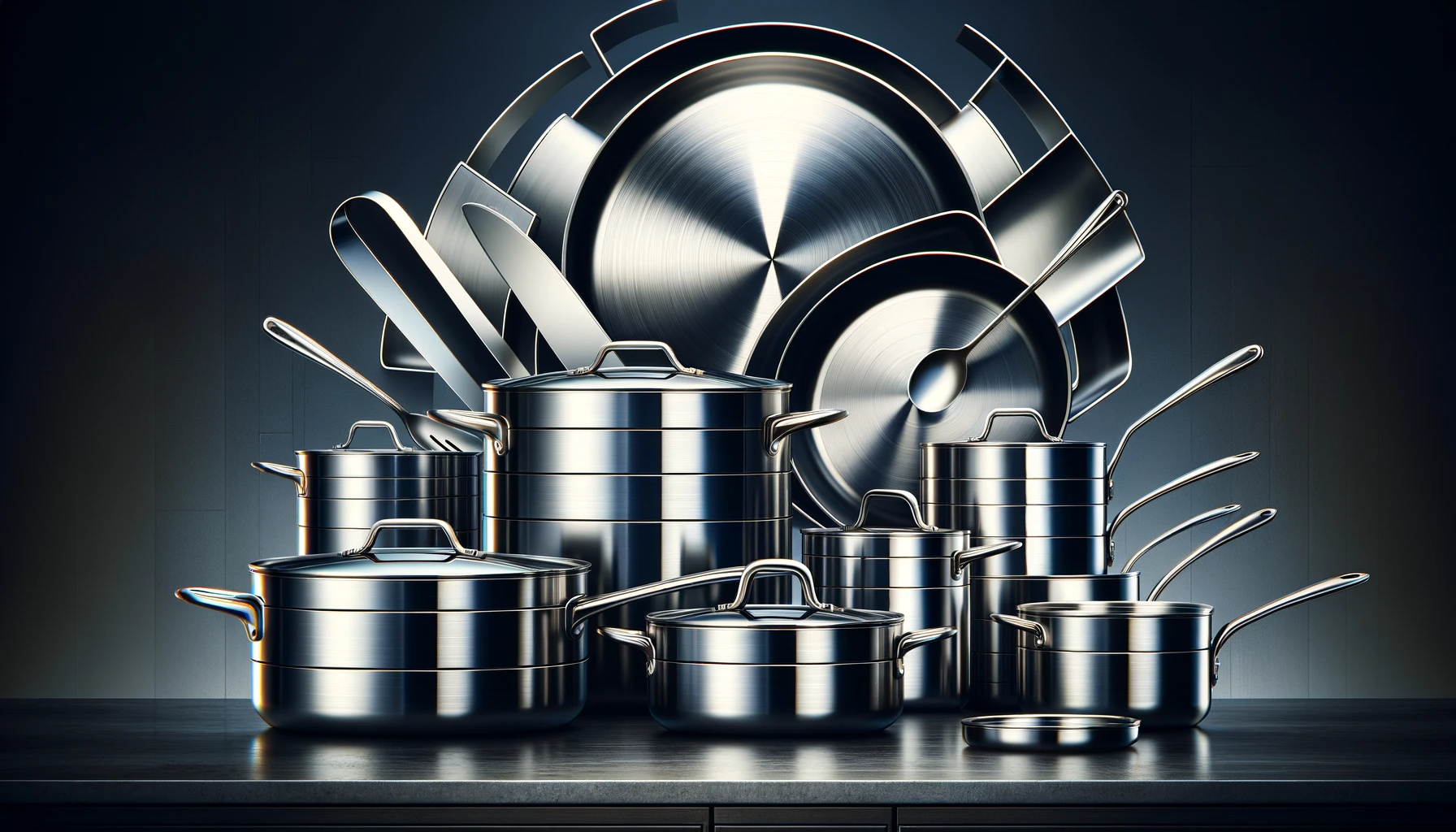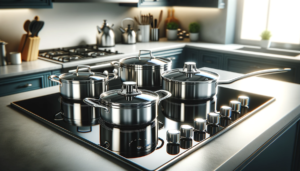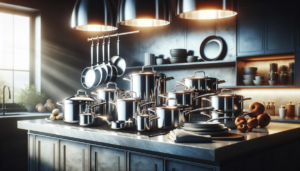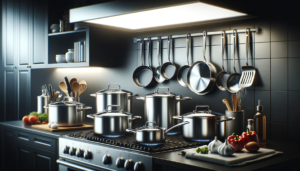With intricate layering rivaling a flaky croissant, stainless steel cookware constructions fuse multiple sheets of conductive metals to amplify durability and heating precision.
But do extra layers translate to better cooking?
When choosing between 3 ply vs 5 ply stainless cookware, more layers bring better temperature control and resilience but raise costs exponentially.
Let’s delve into ply constructions to uncover whether upgraded performance warrants the hefty 5 ply price hike.
3 Ply vs 5 Ply Stainless Steel Cookware
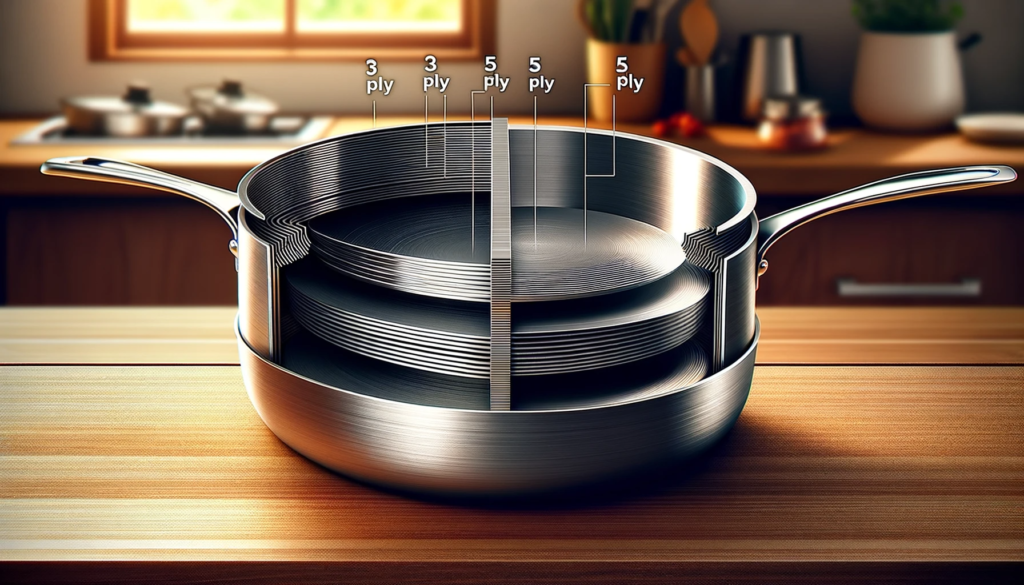
When it comes to performance and durability, 5 ply stainless steel cookware is generally superior to 3 ply.
The additional layers of conductive metals improve heating consistency and precision for reliable temperature regulation.
5 ply construction also enables thicker metal gauges for enhanced durability and longevity over time.
However, the performance gains of 5 ply come at a steep price hike over quality 3 ply cookware.
Below we will explore the differences between 3 and 5 ply stainless cookware in depth, covering heating efficiency, durability, ideal uses and cost considerations.
This will provide guidance for choosing what best suits your cooking needs and budget.
What is Ply in Cookware?

Ply refers to the number of layers of metal that are laminated together to construct the cookware.
The term ply specifically indicates how many separate sheets of stainless steel, aluminum, copper, or other metal components have been fused together under intense heat and pressure to produce the final cookware product.
A 3 ply construction consists of 3 layers of metal bonded together, while a 5 ply cookware set features 5 total layers of metal that comprise the overall thickness, materials used, and performance attributes.
The different metals layered into the ply construction each provide unique properties that contribute to how the cookware handles heating, cooking, cleaning, and general usability.
Most ply combinations utilize stainless steel on the interior cooking surface and exterior visible faces, sandwiching a middle layer of highly thermally conductive aluminum or copper.
This metal core quickly and evenly spreads heat across the bottom and up the vertical sides of the cookware when placed over a stove burner.
The stainless steel layers lend a smooth, durable, and stick resistant cooking surface that simplifies cleaning.
A higher ply number denotes more total layers of metal laminated together, increasing thickness and often enhancing heating capabilities and lifespan – along with bumping up pricing.
Benefits of 3 Ply Construction

A 3 ply stainless steel design offers an ideal balancing act of good cooking functionality, durable construction, and reasonable affordability.
With 3 layers of metal bonded together, it provides a baseline level of performance and longevity suited for passionate home cooking without reaching the pricing echelons of higher ply options.
Key advantages to selecting a 3 ply stainless set include:
More Budget-Friendly Costs
By incorporating the fewest number of metal layers possible while still improving upon single-ply designs, 3 ply stainless steel cookware provides better heat conductivity and durability while avoiding the material and production costs of additional layers.
This hits a nice sweet spot between bargain basic disc bottom pots and pans and sharply priced premium 5+ ply sets.
It remains reasonably affordable for higher-end cooking.
Lightweight and Maneuverable
Limiting construction to 3 thin, stacked metal sheets prevents 3 ply cookware from becoming heavy and unwieldy to handle.
The overall heft stays manageable for lifting in and out of ovens, quickly transferring between burners, or confidently tossing saute pans.
While alloy aluminum pans may still have a slight weight advantage, smart handle shaping and balance points allow easy motion.
Good Stovetop Heat Distribution
The inclusion of a middle layer of aluminum or copper beneath the steel exterior facilitates efficient stovetop heating.
The high conductivity core readily absorbs burner heat, transmitting temperatures smoothly across the bottom and up the sides while minimizing hot spots.
This enables reliable searing, simmering, candying, and sauce work without scorching or uneven cooking.
Holds Up Well Long Term
While 3 ply won’t match the extreme durability of commercial cookware, it provides lasting performance for years of regular home cooking duties.
The single inner and outer layers of rugged stainless steel guarding the conductive aluminum or copper core resist warping and degradation from daily use.
Following manufacturers care guidelines, 3 ply cookware should maintain shape and function over extended periods.
Benefits of 5 Ply Construction
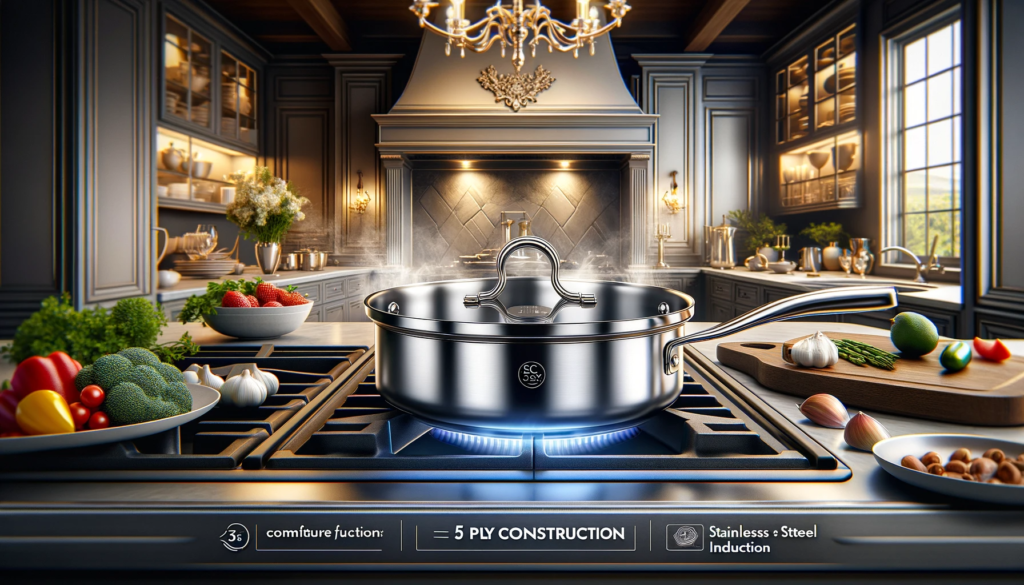
Stepping up to a 5 ply stainless steel cookware construction amplifies heating precision, durability, and versatility through key performance advantages:
Unrivaled Temperature Control
The additional layers translate to stellar temperature regulation and cooking control compared to 3 ply.
With 2-3 sheets of highly conductive metals like aluminum and copper working in the core, heat travels swiftly and evenly across the entire cooking surface.
This enables flawless searing, simmering, candying, tempering, and more with no adjustments needed at different heats.
Extreme Durability Resists Warping
The dual stainless exterior surrounding 3 interior conductive layers lends remarkable resilience against warping or deforming, even under heavy use.
Premium stainless steel alloys get worked and compression bonded to add thickness and strength.
The shapes stay rigidly true session after oven session, withstanding subsequent temperature spikes and dips or high output burner blasts.
Induction Ready
Well-built 5 ply constructions are able to utilize more stainless in lieu of solely aluminum layers.
This allows compatibility with induction cooktops alongside traditional gas or electric ranges.
It future-proofs purchases in case of transitioning to an induction range down the road while still utilizing existing cookware.
Heavier-Gauge Metals
In tandem with extra layers, high-end 5 ply pieces often utilize thicker, restaurant-grade stainless steel alloys.
This lends supreme durability and enables hand polishing to a lustrous shine.
The eye-catching result still tackles rigorous cooking tasks.
Blends Performance with Beauty
Gleaming like professional cookware, 5 ply exteriors feature impeccable hand-polished or striking brushed finishes worthy of open kitchen display.
Yet the interiors harbor no compromises, constructed from battle-ready metals to handle endless cooking demands.
The blend of performance and beauty is unmatched.
Heat Distribution Comparison of 3 Ply vs 5 Ply
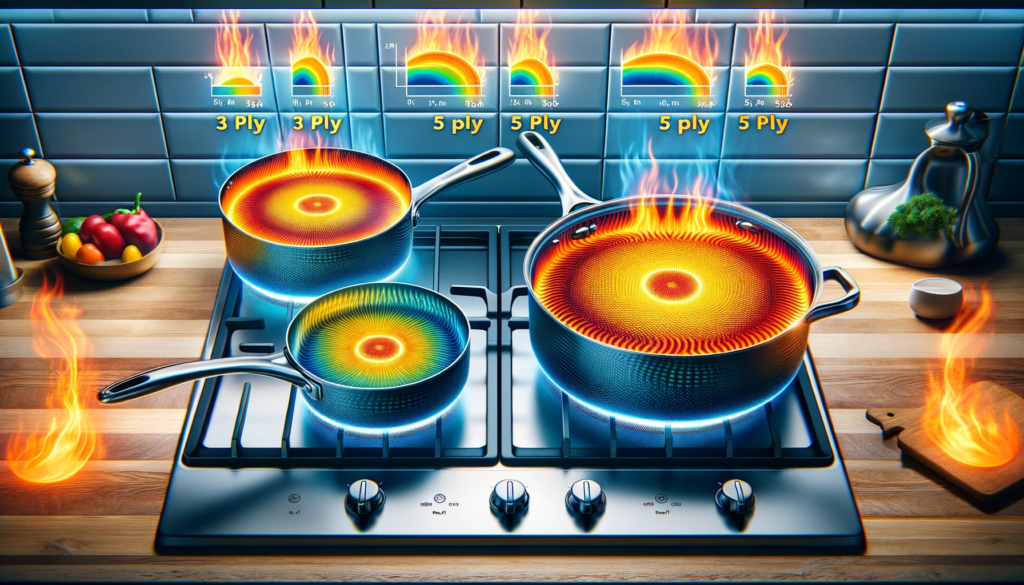
The thermal conductivity and efficiency of heat transference climbs substantially when progressing a stainless steel cookware set from 3 to 5 ply constructions.
But how exactly does this boost manifest for actual stovetop cooking application?
Extremely Even Surface Heating
A 5 ply stainless steel pan vastly outperforms 3 ply alternatives when it comes to consistency and uniformity of heating across bottoms and up sides.
The multiple sheets of aluminum and copper compound heat energy distribution, stopping erratic bottom hot spots in their tracks.
Foods cook through gently and evenly.
Precise Temperature Adjustability
Benefitting from that unified heating, a 5 ply pan reacts seamlessly to dialing stovetop burners up or down – critical for perfectly tempering chocolate without seizing or candying sugars without burning.
The metal layers rapidly adjust output for incredible precision tagging desired temperature stages.
Confident Delicate Cooking Ability
From maintaining flawless barely-there simmers when reducing sauces to holding low temps for melting chocolates, 5 ply cookware brings certainty where 3 ply may falter.
The unparalleled consistency empowers taking on finicky candies, custards, and temperamental dishes requiring stable low heating.
Why the Price Difference Between 3 Ply and 5 Ply?
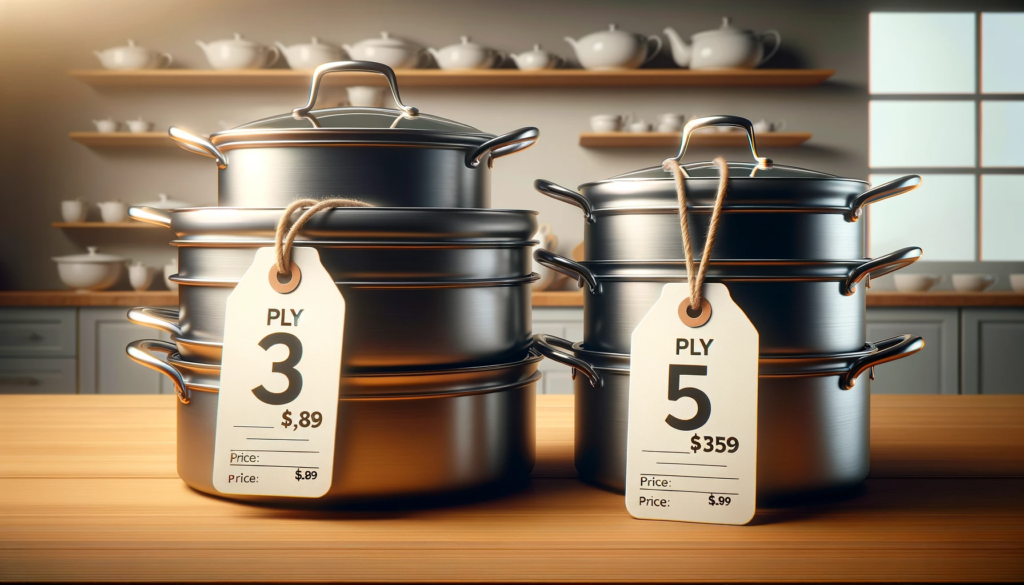
Given the performance amplifications and construction excellence, 5 ply stainless steel cookware pieces come at a notably higher price point driven by pricier materials and manufacturing complexity:
Pricier Metal Materials
The combo of extra stainless layers and frequently thicker metal gauges means more total metal gets invested into each 5 ply pan.
This includes costly stainless alloys plus ample conductive copper and aluminum – far overshooting 3 ply material needs.
Labor-Intensive Manufacturing Methods
Expertly producing cookware with 5 perfectly bonded sheets of metal utilizing tremendous heat and compression is an exceptionally involved process reflected in pricing.
Craftsmen hand polish and finish 5 ply cookware sets to perfection.
Significant Price Multiplier
Factoring upgraded metals, construction intricacies, extreme durability expectations, and visual elegance demands, 5 ply stainless steel cookware easily introduces a 2-5 times price multiplier over comparable 3 ply sets.
The price hike is undeniable.
Best Suited Applications: 3 Ply vs 5 Ply
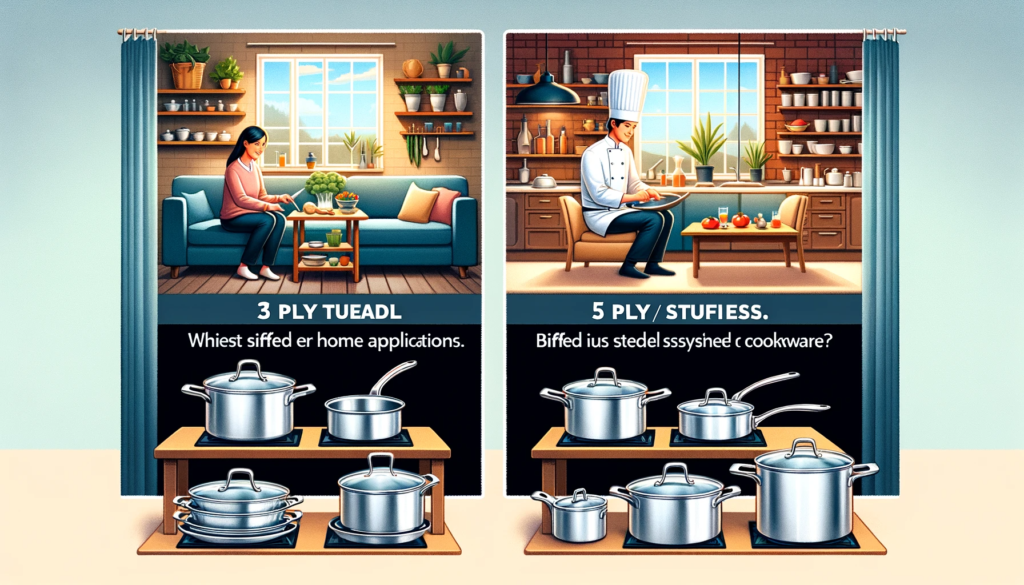
With performance, pricing, and intended applications varying so greatly between 3 and 5 ply stainless steel cookware, it pays to examine ideal scenarios to determine the best fit:
3 Ply Cookware Best Uses
- Daily home cooked meals
- Weeknight dinner prep
- Basic recipes and ingredients
- Moderate output stove cooking
- Occasional oven use
- Budget-conscious shoppers
5 Ply Cookware Best Uses
- Restaurant-caliber cooking
- High-output pro-style ranges
- Preparing large servings
- Frequent oven or broiler use
- Elaborately layered dishes
- Precision temperature regulation
- Avid home cooks
While 5 ply stainless steel cookware is unmatched in conductivity and durability, 3 ply delivers reliable versatility that satisfies most routine home kitchen duties.
Factoring in cooking habits, complexity of dishes, performance needs, and budgetary constraints helps clarify which ply construction makes the most practical investment.
Conclusion
When it comes to stainless steel cookware, more ply generally equates to better conductivity, durability, and versatility, but at a price.
While 5 ply reigns supreme for high-level cooking demands, quality 3 ply delivers reliable everyday functionality for most home cooks.
Evaluating cooking habits and budget determines which best fits your kitchen.
